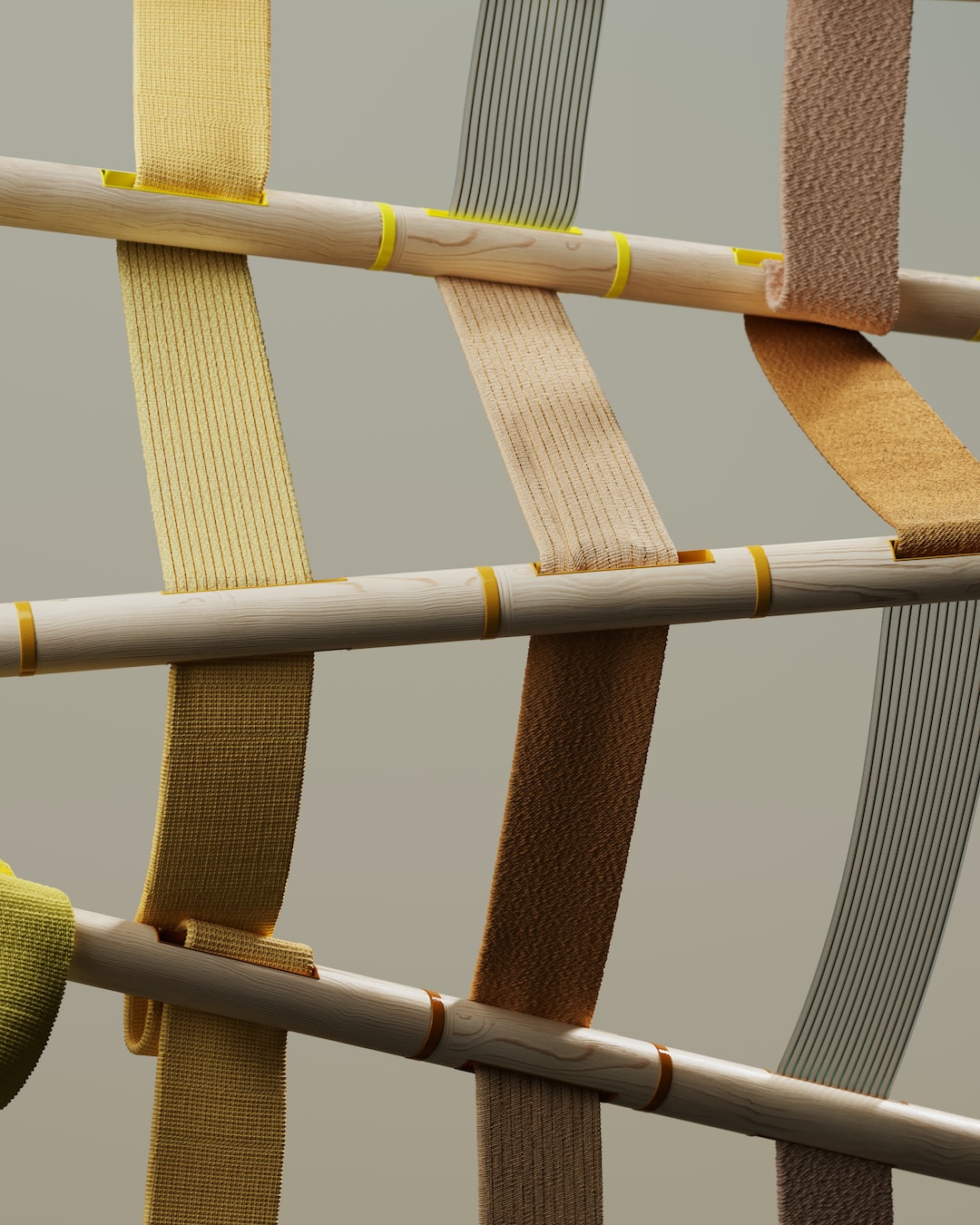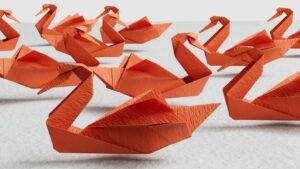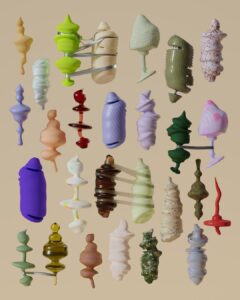Support our educational content for free when you purchase through links on our site. Learn more
3D Printing Process: A Comprehensive Guide [2023]

If you've been fascinated by the incredible things you've seen printed with a 3D printer, from toys to intricate jewelry, you might have been curious about how the 3D printing process works. In this comprehensive guide, we’ll give you an overview of everything you need to know about the 3D printing process including the different types of 3D printers, materials available, and their pros and cons.
Table of Contents
- Introduction
- How 3D Printing Works
- Types of Materials
- Printing Guidelines
- Post-processing
- Applications of 3D Printing
- Frequently Asked Questions
- Quick Tips and Facts
- Final Thoughts
Introduction
3D Printing has come a long way from its inception in the 1980s when the first stereolithography machine came into existence. Since then, there has been an explosion in the number of printers and materials available.
Simply put, 3D printing is the process of creating objects from a digital file. The object is created layer by layer, and each layer is a replica of the previous layer, building up a three-dimensional object, with the help of a 3D printer. This process opens up all sorts of possibilities ranging from rapid prototyping to the printing of parts for industrial uses.
How 3D Printing Works
There are several types of 3D printing technologies such as Fused Deposition Modeling (FDM), Stereolithography (SLA), Digital Light Processing (DLP), Selective Laser Sintering (SLS), Material Jetting, and Binder Jetting. In this section, let’s delve into each of these technologies.
Fused Deposition Modeling (FDM)
Fused Deposition Modeling is the most common type of 3D printing technology that is used for the creation of concept models and designs.
In FDM, the printer melts material and lays it down layer by layer until it reaches the final height. The melted material extrudes through a nozzle of the printer, and the printer's computer coordinates movement of the nozzle in a pattern that is parallel to the layer below.
Pros
- Cheap
- User-friendly, perfect for beginners
- A wide variety of materials available
Cons
- Finished product not of high quality
- Slow process
Some of the popular FDM printers available in the market include MakerBot, Lulzbot, and Flashforge.
Stereolithography (SLA)
Stereolithography is a process that is used to create high-quality prototypes and models for the aviation, automotive, and various other industries.
Pros
- Extremely detailed and accurate
- Smooth and high-quality finish
- Fast and efficient process
Cons
- Expensive
- Limited material options
Some of the popular SLA printers include Formlabs, Peopoly, and ANYCUBIC.
Digital Light Processing (DLP)
DLP is highly similar to SLA printing in that it uses a UV light source to cure the resin layer by layer. However, instead of using a laser to trace out the pattern of the layer, DLP uses a projector to project the image of an entire layer onto the liquid resin.
Pros
- Fast print times
- High levels of accuracy
- Can create intricate designs
Cons
- High costs
- Not suitable for larger builds
- Similar to SLA in materials
Some popular DLP printers include Creality, Anycubic, and Phrozen.
Selective Laser Sintering (SLS)
Selective Laser Sintering is a technology that uses a high-powered laser to melt the powder material layer by layer. The powder material gets distributed on the build platform in a thin and even layer with the help of a roller.
Pros
- No support structures required
- Can produce extremely complex parts
Cons
- Expensive to purchase and operate
- Limited material selection
The most popular SLS printers include Sinterit and Sintratec.
Material Jetting
Material jetting prints objects by spraying droplets of photo-polymer through multiple small nozzles onto the build platform. This technology prints with high accuracy and definition, allowing for print-in-place hinges, interlocking parts, and gears.
Pros
- Highly accurate
- Multiple materials can be printed into the same object
- Superior surface finish
Cons
- High maintenance costs
Some popular material jetting printers include Stratasys, 3D Systems, and PolyJet.
Binder Jetting
Binder jetting is a powder bed 3D printing technology like SLS, except instead of laser bonding the powders together, the printer uses a liquid binder to glue the powders together.
Pros
- Inexpensive technology
- Can print multicolor models in a single pass
- Up to 10x faster than SLS printing
Cons
- Requires a lot of post-processing
- Material strength is not strong
Popular binder jetting printers include HP, ExOne, and Desktop Metal.
Types of Materials

The material that you choose for your 3D printing depends on the type of printer you are using, the desired quality, and the application. In this section, we will take a look at the most commonly used materials in 3D printing.
Thermoplastics
Thermoplastics are the most commonly used materials in 3D printing. They are easy to work with, have good mechanical properties, and are recyclable. Popular thermoplastics include PLA, ABS, and PETG.
Thermosetting Polymers
Thermosetting polymers are often used when a higher strength is needed over thermoplastics. These materials cannot be re-molded once they are processed.
Metals
Metal printing is one of the fastest-growing segments in the 3D printing industry. While metal printing can be expensive, the parts' strength and durability make up for it.
Ceramics
Ceramic 3D printing is still in the developmental stages, but it has shown a lot of promise. Unlike other printing materials, ceramics require larger and more expensive printers.
Printing Guidelines
When it comes to printing, there are a few general guidelines to keep in mind:
Layer Height
Layer height is the distance between the nozzle and the printing surface. A higher layer height gives you faster printing times but results in lower print quality.
Infill
Infill refers to the pattern that gets printed inside your model. Using more infill results in stronger parts, but it also requires more material.
Supports
When printing a design that contains overhangs, support structures are necessary to prevent the model from collapsing.
Bridging
Bridging is a technique that allows the printer to print platforms that have spaces between them, like a miniature suspension bridge.
Post-processing
Post-processing involves doing additional steps after the actual printing process to complete the final product. There are many different post-processing techniques available, but sanding, polishing, painting, and chemical treatments are the most popular.
Applications of 3D Printing
3D printing has revolutionized manufacturing, enabling designers and engineers to take advantage of immense design freedom and reduced time-to-market. The following sectors have been significantly impacted by 3D printing technology.
Healthcare
3D printing is changing the healthcare industry, with medical professionals using this technology for developing prosthetic devices, building customized implants, and creating skin grafts.
Architecture
3D printing is impacting the architectural industry as well, allowing for easier and quicker scale models. Architects can now print large-scale models of their projects to help clients visualize the end result.
Manufacturing
3D printing has the potential to disrupt the global manufacturing industry since it makes prototyping quick and cost-effective. You can now make complex designs that were historically difficult or impossible to produce.
Aerospace and Defense
3D printing has revolutionized the aerospace and defense industry, cutting time and cost from the design and prototyping process. NASA has already used 3D printing to develop rocket engine parts.
Automotive
With 3D printing, automobile manufacturers can print parts on-demand, which can save on inventory storage costs and help with the maintenance process.
Consumer Goods
3D printing technology is allowing consumers to create unique and one-of-a-kind household products like lamps, vases, and phone cases.
Entertainment
3D printing is changing the face of the entertainment industry, allowing filmmakers to create highly detailed models and action figures.
Art and Fashion
3D printing has made its way into the fashion and art world, allowing designers to create wearable geometric pieces and unique sculptures.
Frequently Asked Questions
Is 3D-printed material as strong as injection-molded ones?
It depends on the material but generally speaking, 3D-printed parts are not as strong as injection-molded parts. However, parts produced through 3D printing are often more precise and have better details.
What is the accuracy of 3D printing?
The quality of accuracy that you can obtain from a printer depends on the technology, parameters used, and the quality of the printer. SLA printers can provide sub-millimeter accuracy.
Can 3D printers actually print food?
Yes, 3D printers can print food, not just the appearance of food but the actual food itself. The company Foodink is a 3D printing company entirely dedicated to printing edible food.
Can you print with recycled materials?
Yes, there are many examples of 3D printing with plastic recycled material available.
What are the software requirements for 3D printing?
The most commonly used 3D design software include Fusion360, Tinkercad, and SketchUp. Once the design has been created, software such as Cura, Slicer, or Simplify3D standardly prepares the model for 3D printing.
Quick Tips and Facts
- 3D printing can reduce overall part cost by up to 50% compared to conventional machining methods.
- The global 3D printing industry was valued at $17.2 billion in 2020





